
The Price
of Pride
June 26, 2025

The year is 1981 and the atmosphere at Grange Park in ��ѻ��ý is joyous.��
It's a sunny afternoon, and the air is warm with chit-chat and disco hits blasting from speakers. There's food, a few face painters and countless balloons.��
Michael McGaraughty, then 19 years old, doesn’t recall what he was wearing, or that it took place on June 28 —��it was, after all, 44 years ago. “There have been so many Sundays in June since then,” he said.����
But he does remember feeling like he was part of something much bigger than himself as he left the park with thousands of others and marched toward Yonge St. against police orders.
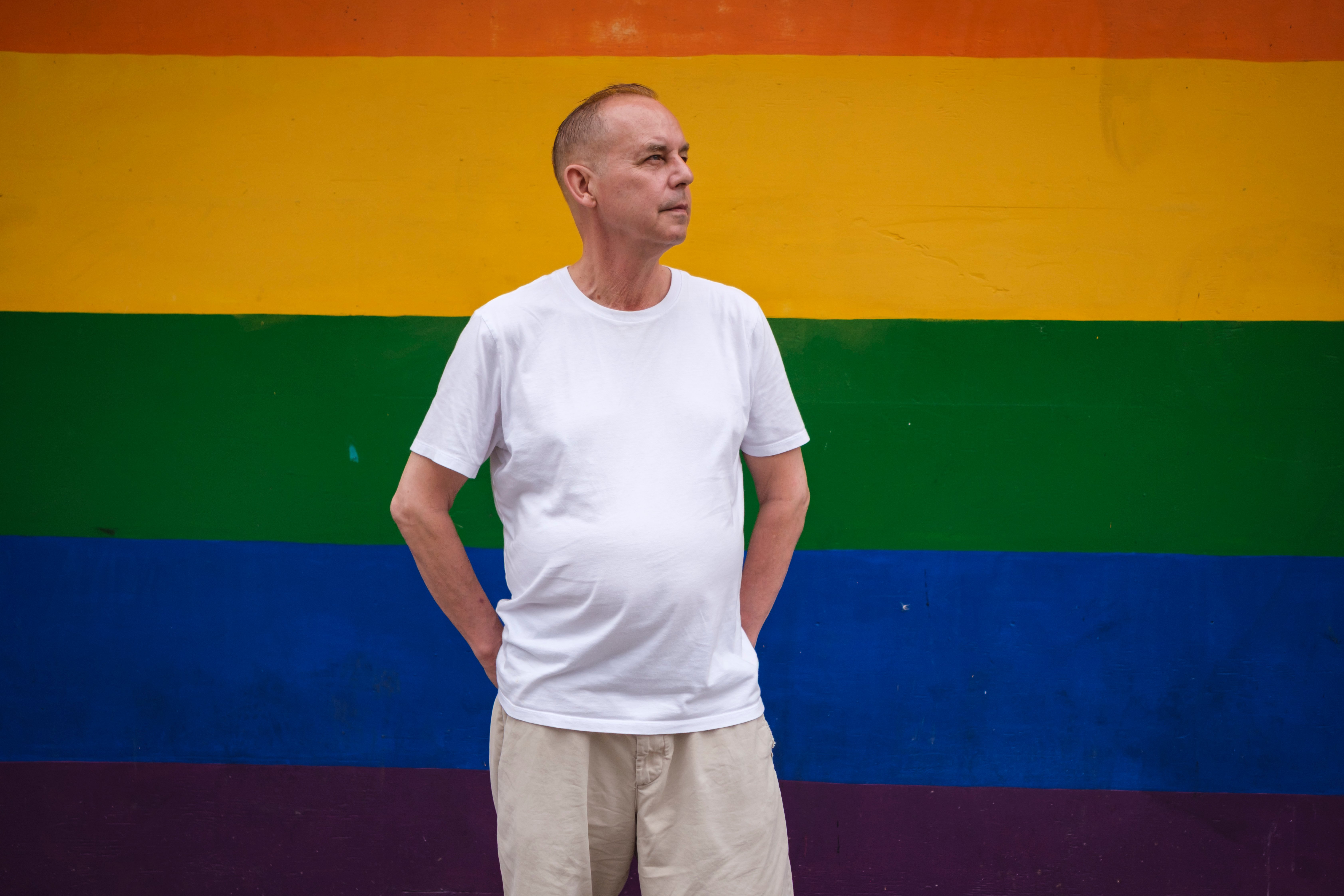
Left: Michael McGaraughty, who participated in the very first ��ѻ��ý Pride parade in 1981 / Giovanni Capriotti
Right: February 1981, the night after ��ѻ��ý police arrested about 300 people in raids on four bathhouses / Staff photo ��ѻ��ý Star
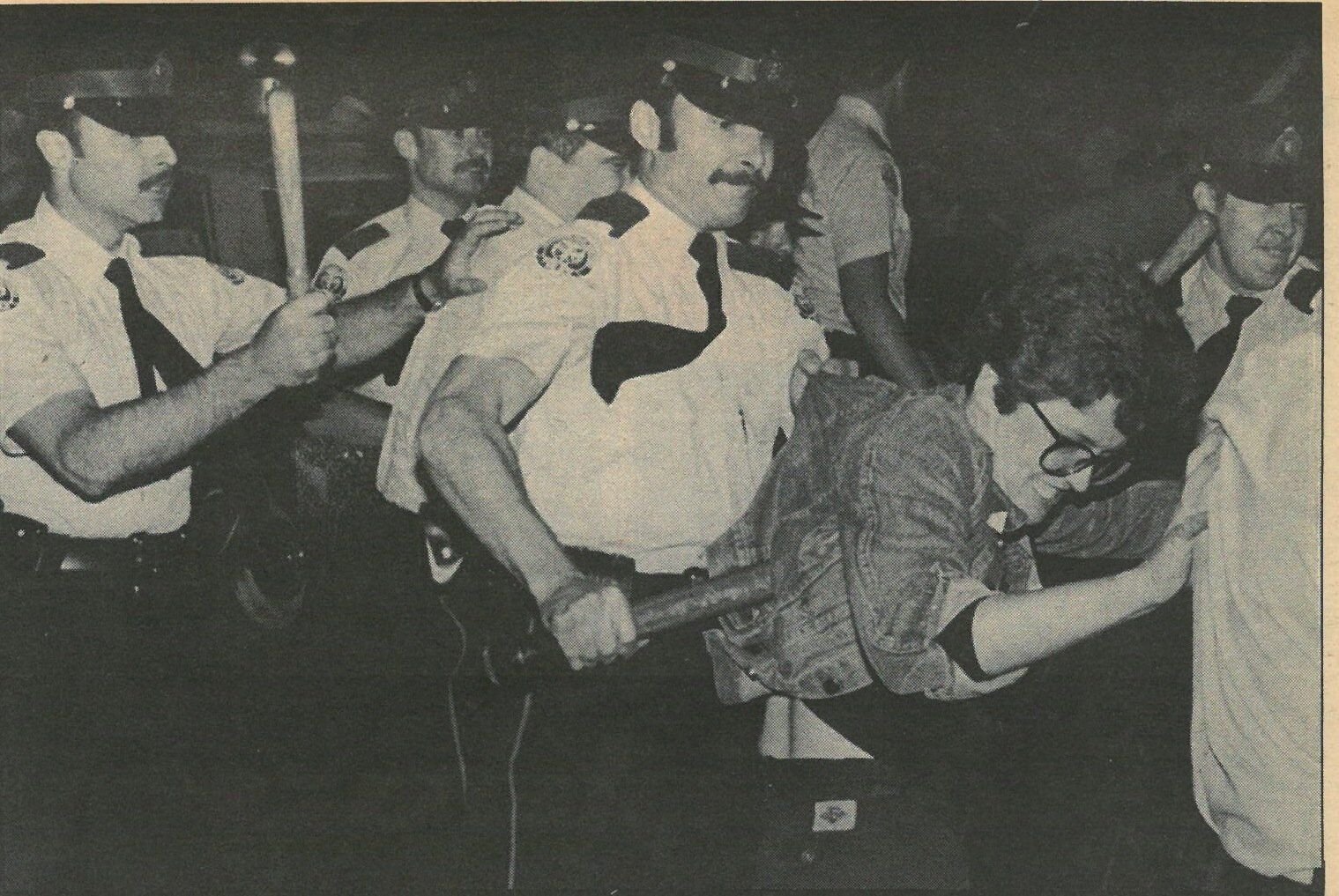
That��Sunday went down in history as ��ѻ��ý's first Pride parade. It was a political march following a series of police raids of ��ѻ��ý bathhouses that year — but it was also meant to be a big celebration by and for the queer community.
“It was a really exciting time,” said McGaraughty, who eventually joined The Lesbian and Gay Pride Day Committee, now called Pride ��ѻ��ý. “You were on the verge of creating a better world for queer people in Canada.”
More than 40 years later, Pride ��ѻ��ý is in trouble. As anti-diversity sentiment spreads across North America, and with an economic crisis on the horizon, corporations have been reducing diversity commitments while suddenly cutting funding for Pride, which has grown exponentially since its inception with help from corporate sponsors.
Total revenue includes cash and the value of in-kind goods and services.
Pride ��ѻ��ý executive director Kojo Modeste maintains that all levels of government should increase support for the organization, since "they make the most gain out of Pride."
"If we were to receive five per cent of the taxable revenue that we bring in, we would not need to rely on corporate sponsors, or anything like that, because it will be enough to fund the festival," said Modeste.
Without a reliable source for most of the festival’s funding, many people in the 2SLGBTQ+ community and allies are worried about its future.
“Pride is the antidote to this moment of deep division,” said Tyler Boyce, executive director at the Enchanté Network, a group dedicated to supporting the business needs of 2SLGBTQ+ member organizations across Canada, including Pride ��ѻ��ý.��
“It's not just important to the community, but it's important to all Canadians.”��
“Pride has been able to do something really special, and that's to show folks that no matter where you come from — your race, ability, skin colour, accent — you're welcome, and you're loved for exactly who you are.”��
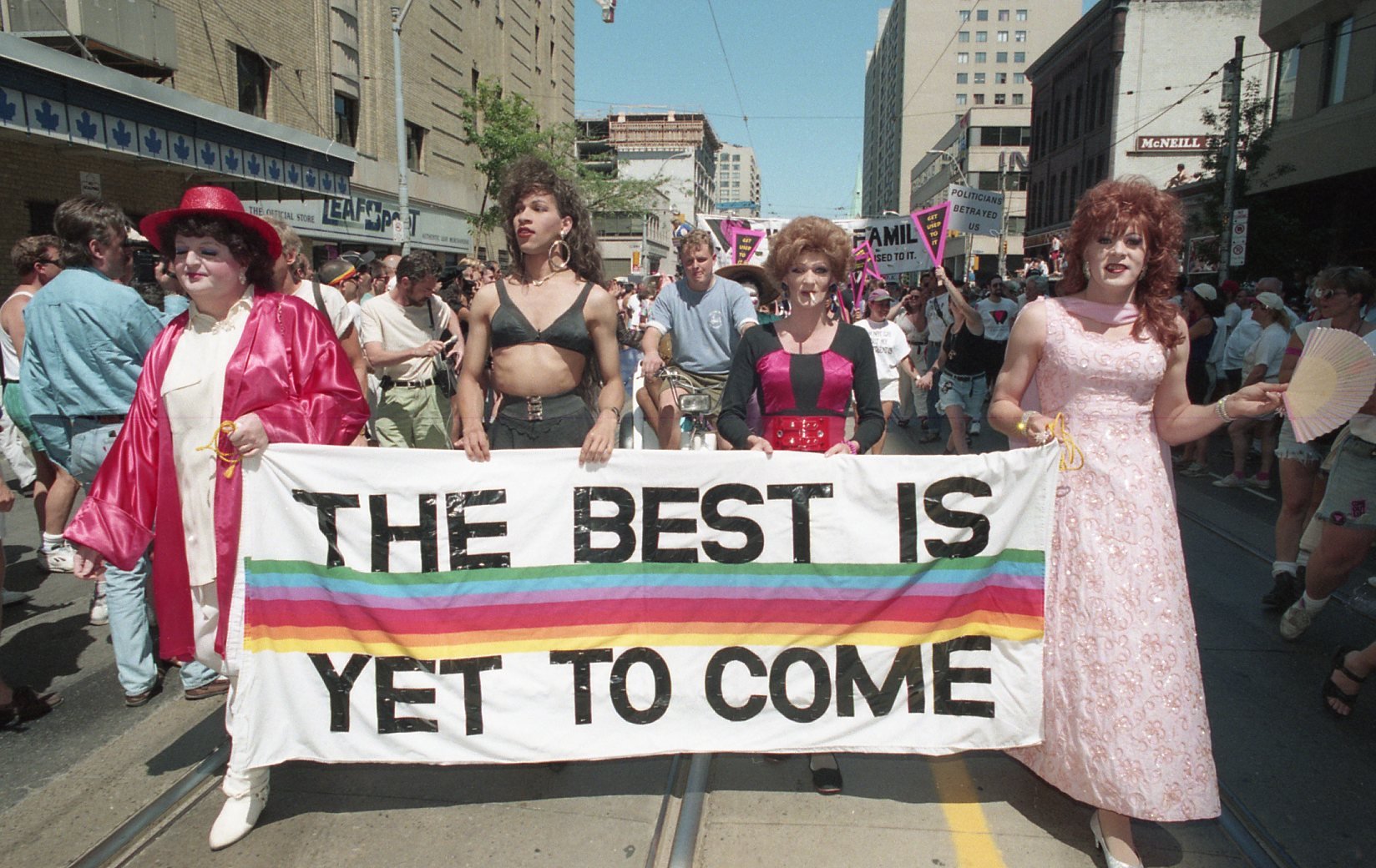
50,000 people from the LGBTQ community took part in the Pride parade on July 3, 1994 / Peter Power, ��ѻ��ý Star
Pride gets pricey
Today, Pride happens over the entire weekend, and the city closes off several blocks��around Yonge and Church Streets for hundreds of floats, street vendors and local artists.
Millions of people attend the festival, which contributed more than $400 million to the GTA’s economy last year, according to a report by research firms Ipsos and Prism Economic Analysis.��
At the same time, festival costs have skyrocketed since McGaraughty's time as a parade organizer, especially with more attendees gathering downtown, higher insurance rates and greater safety precautions post 9/11.��
He estimated the whole event cost less than $100,000��when he was co-chair of The Lesbian and Gay Pride Day Committee in 1997 ($181,000 adjusted for inflation).
Pride ��ѻ��ý’s total expenses were nearly $9 million in 2024, compared with $1.5 million in 2007 ($2.1 million adjusted for inflation).
Pride ��ѻ��ý's expenses in 2024
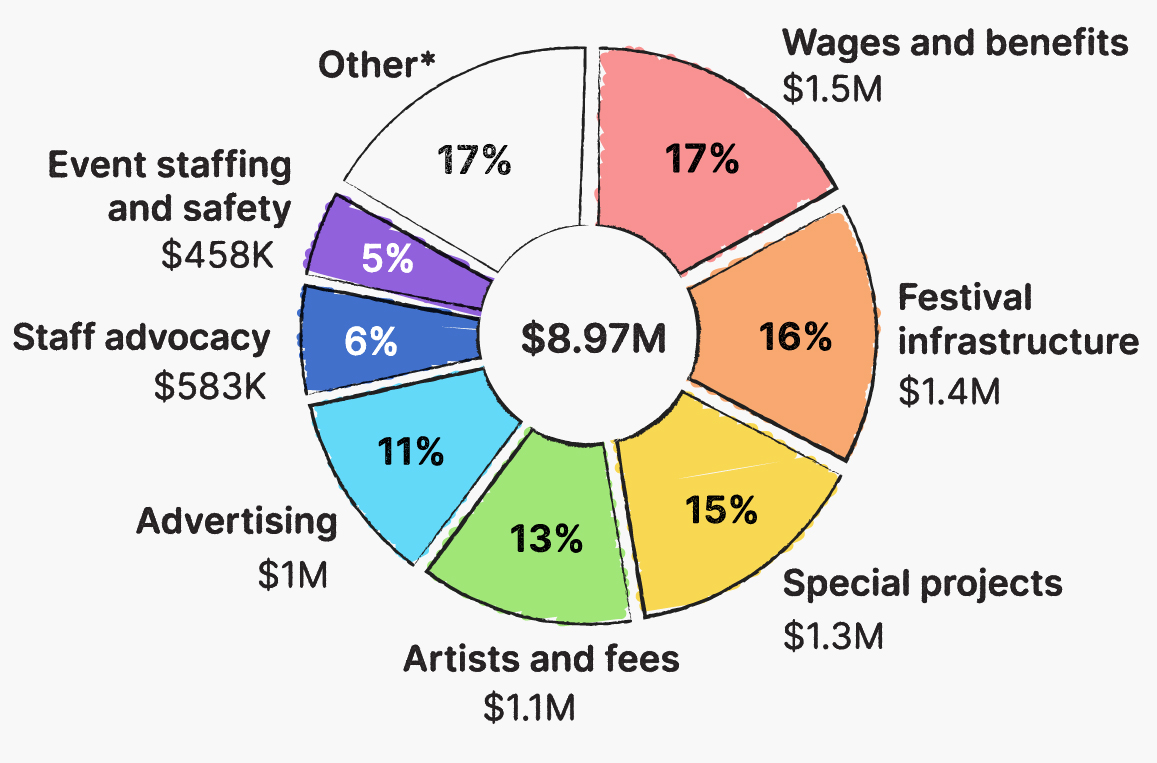

*Occupancy, Insurance,
Food and bev., Admin, etc.
Source: Pride ��ѻ��ý 2024 audited financial statement
As costs went up, festival organizers grew their partnerships with corporate sponsors, who��realized in the mid-2000s there was a business case for aligning with Pride.��
“There was lots of research that started to come out — particularly in the 2000s and up to present day — which showed that brands that supported diversity and inclusion initiatives, including LGBTQ rights, were seen more favorably by consumers,” explained Scott Knox, founder of ��ѻ��ý-based organization Pride in Advertising & Marketing.����
“Therefore, it was a lucrative move by brands to step in with their marketing dollars to support the initiatives of the LGBTQ movement.”��
According to Pride ��ѻ��ý’s financial statements, support from corporations took off around the same time that Barack Obama was elected U.S. president, in spite of the economic challenges during the 2008 global financial crisis.
Pride revenue sources over time
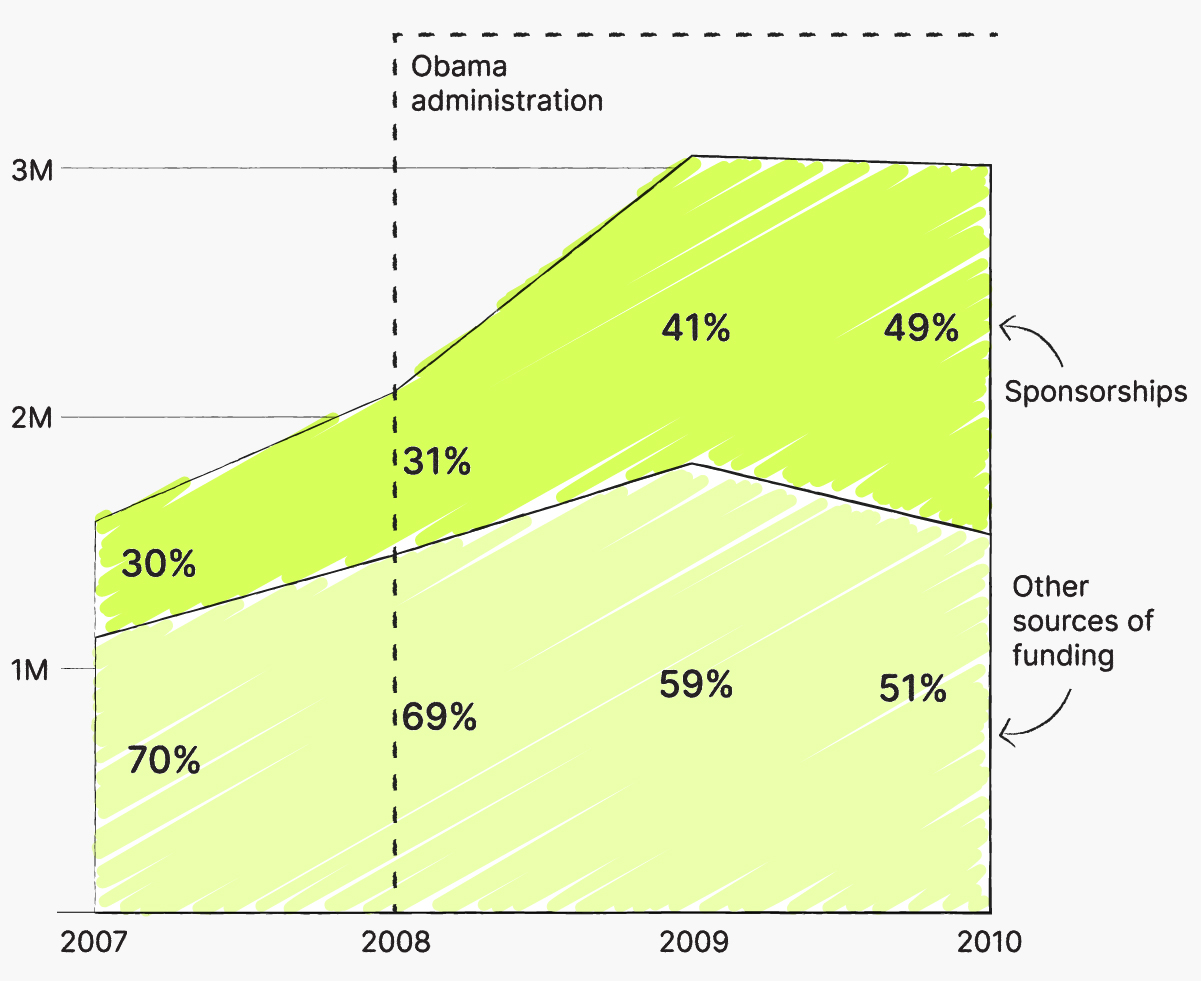

Source: Pride ��ѻ��ý audited financial statements (2008-2010)
Many American firms changed their stance on diversity after the U.S. Supreme Court stopped colleges and universities from considering the race of students in admissions in 2023, according to Eddy Ng, professor of Equity and Inclusion in Business at Queen’s University.��
Companies��such as Google, Amazon and Meta started scaling back diversity, equity and inclusion (DEI) programs — a��move��that became evident��after U.S. President Donald Trump took office last year, solidifying fears of backlash.����
In recent months, Pride organizations in North America, including San Francisco, New York City, Salt Lake City and Washington, D.C.,��have also been ��
This trend��then spilled into corporate Canada, said��Ng. “A lot of American firms that are operating here are trying to be consistent with their operations throughout.”
But even Canadian companies might be discouraged from investing��in diversity initiatives as a result, he added.��
“It’s a competitive move, right?” said Ng. Corporate leaders might think, “'If you're not spending it, why should I be spending it?' And hence you see more of this domino effect happening. And that, to me, is concerning.”
The importance of Pride
Pride ��ѻ��ý’s current funding struggles resurfaced a conversation among those in the 2SLGBTQ+ community on whether Pride should return to being primarily��a political march without the involvement of corporations.����
To Monica Forrester, executive director of Trans Pride ��ѻ��ý, growing corporate participation in Pride “has taken away the fundamental reason why Pride exists.”��
“Pride started as a form of resistance to the hate, violence and discrimination many community members faced in their lives and continue to face,” Forrester wrote in��an email��to the Star.��
“We believe we need to go back to our roots and make it community-driven and protest for our basic human rights.”��
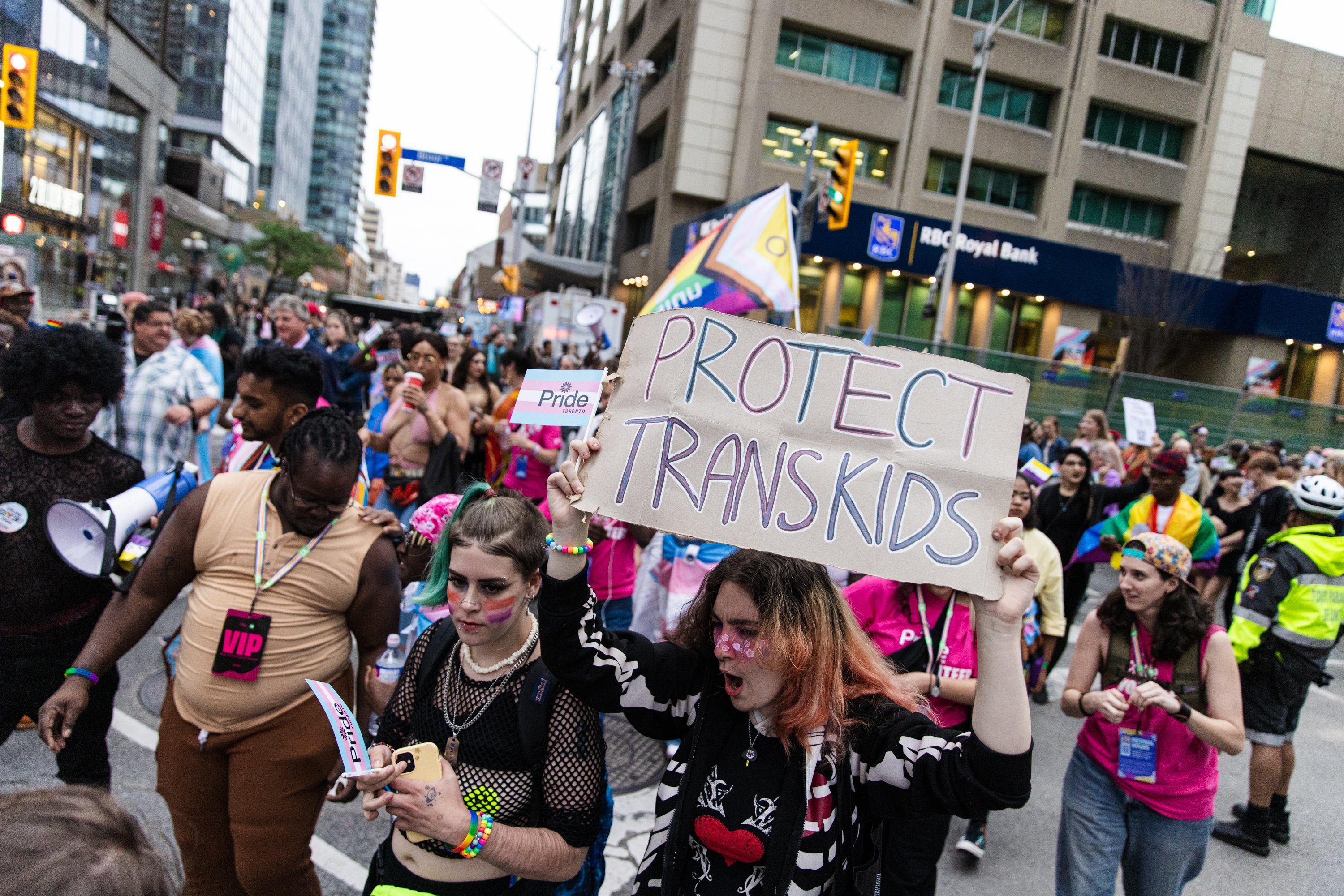
Two signs from ��ѻ��ý Pride 2024 / Nick Lachance and Steve Russell, ��ѻ��ý Star
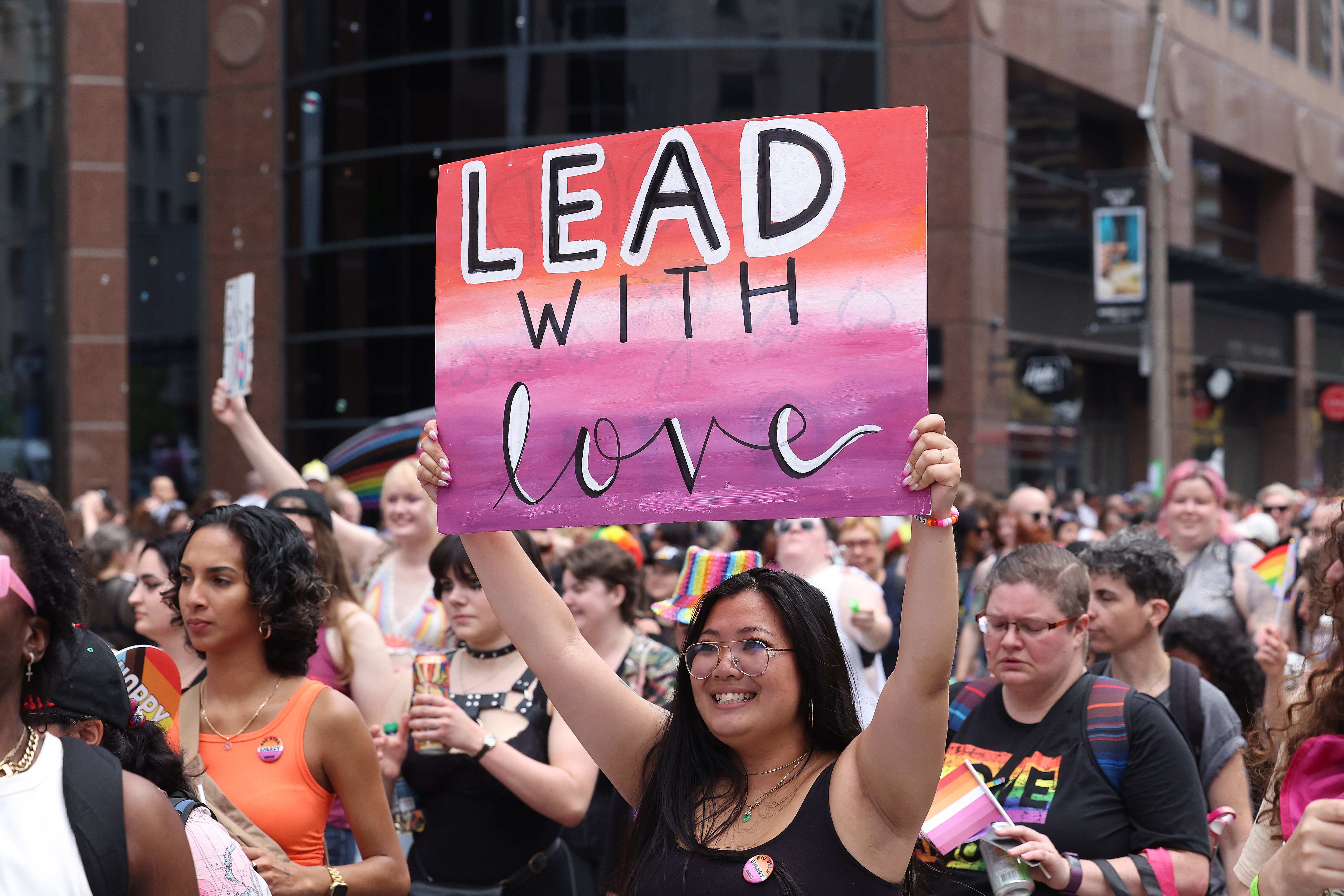
Others, including Boyce, the head of the Enchanté Network,��believe Pride organizers should continue pairing with businesses while working toward diversifying funding sources��— though he admits forging new partnerships won't happen overnight.
“I think we need to come back to the table and deepen our relationships with those who never left the table,” said Boyce.��
“There’s opportunity for funding to come from individual giving, philanthropic foundations, federal government, provincial government, municipal government, as well as corporations,” he added. “Everybody should be playing a role and making sure that this festival happens.”��
Aside from adding hundreds of millions to Ontario’s gross domestic product in 2024, Pride ��ѻ��ý generated $194.3 million in tax revenue and directly supported the creation of more than 4,000 jobs, according to the report by Ipsos and Prism Economic Analysis.��
Economic impact of Pride ��ѻ��ý vs other festivals in 2024 (Ontario GDP)
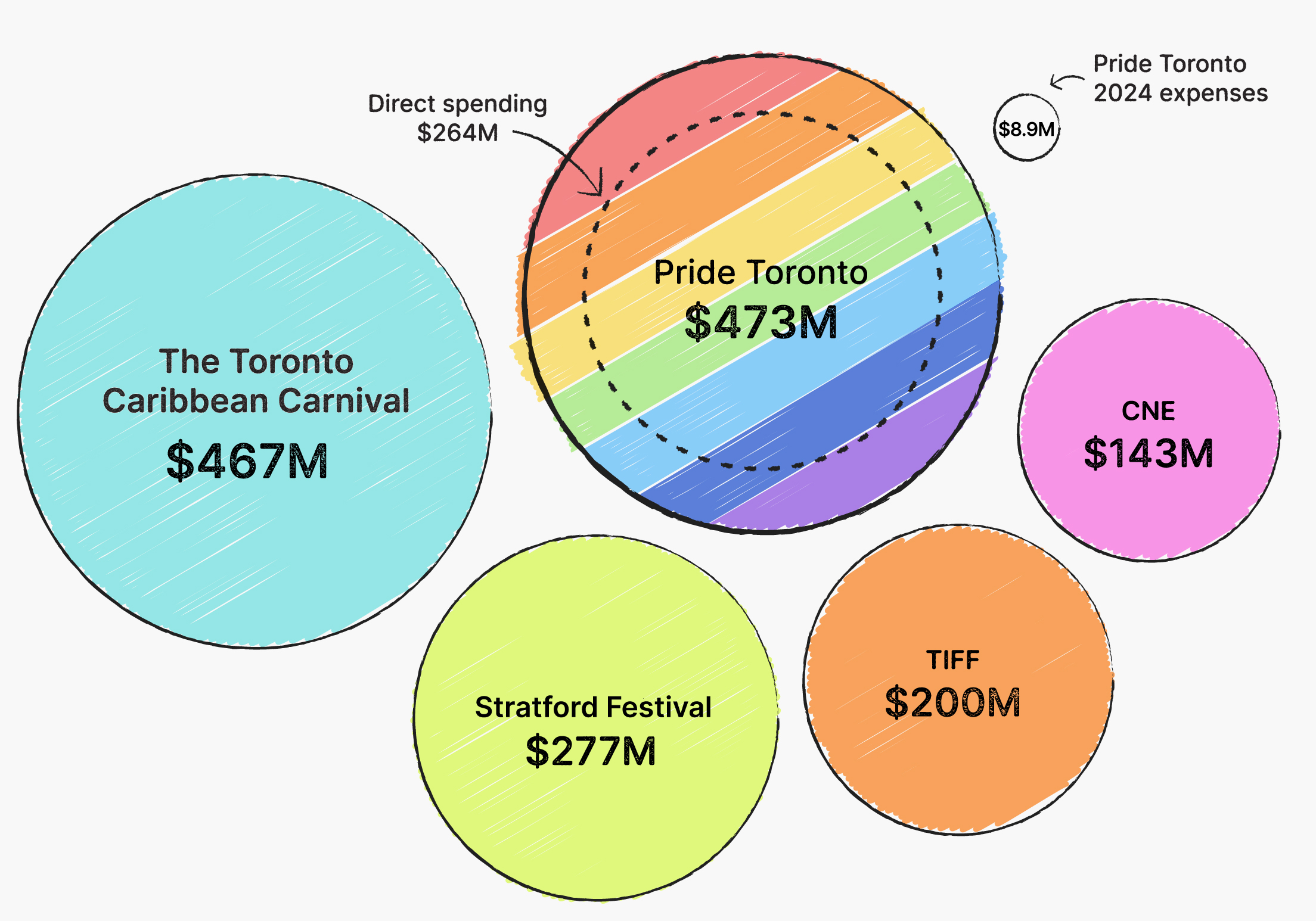
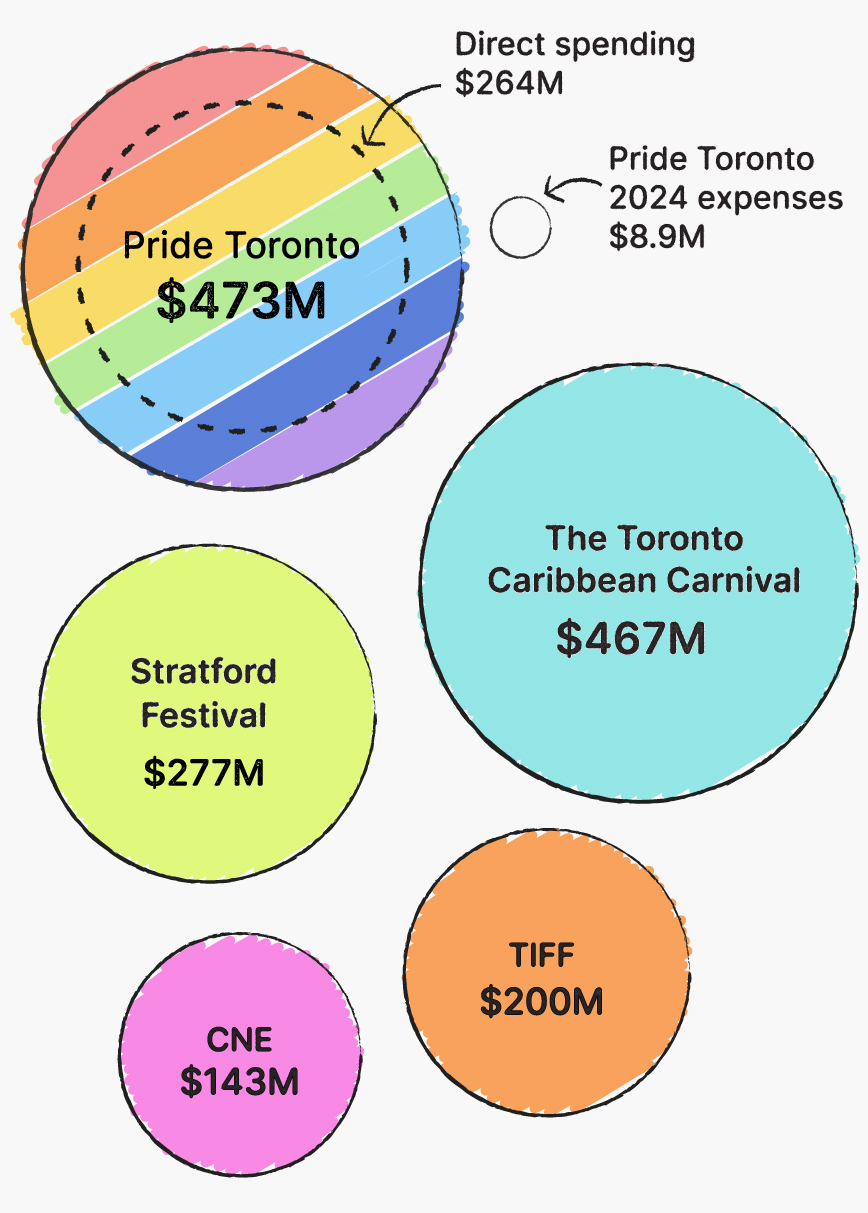
Source: self-reported figures. Direct economic impact measures spending, including on goods and services, within a region as a result of the festival.
Since the news of the sponsorship withdrawals earlier this year, the City of ��ѻ��ý announced more than $2.5 million in grants for 64 ��ѻ��ý festivals, including Pride, saying it wants to improve access to cultural experiences for residents and increase funding levels for cultural organizations.
Local businesses have also stepped up as new sponsors, including The Ballroom Bowl, a chain of bowling alleys in downtown ��ѻ��ý,��and SEIU Healthcare, an Ontario union representing frontline healthcare workers. At the same time, Pride ��ѻ��ý says it collected more than $14,000 from individual donors.����
Meanwhile, ��ѻ��ý Centre MPP Kristyn Wong-Tam has introduced a private members' motion��at Queen’s Park calling for “stable, predictable funding” for Pride and other festivals in a bid to draw attention from the provincial government to the issue.
A spokesperson for Stan Cho, Minister of Tourism, Culture and Gaming, said in a statement that the provincial government has provided Pride ��ѻ��ý with over $1.9 million since 2018, including $450,000 this year in direct grant funding, advertising space and sponsorships.����
But Pride isn't just a big party with large economic benefits. As the DEI backlash intensifies in the U.S.,��community events like Pride are perhaps more important than ever, said Boyce.
"The country needs this moment as well," he said. "To have the largest Pride festival in Canada be strong and present and really send the message that, despite maybe a different conversation happening in the United States, those anti-2SLGBTQ+ sentiments are not welcome in Canada."��












To join the conversation set a first and last name in your user profile.
Sign in or register for free to join the Conversation